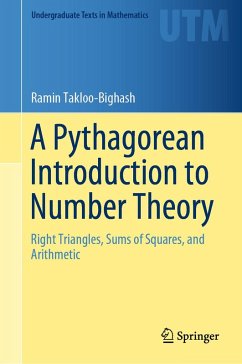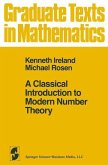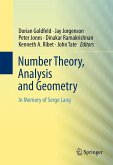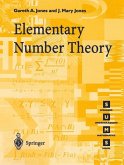Right triangles are at the heart of this textbook's vibrant new approach to elementary number theory. Inspired by the familiar Pythagorean theorem, the author invites the reader to ask natural arithmetic questions about right triangles, then proceeds to develop the theory needed to respond. Throughout, students are encouraged to engage with the material by posing questions, working through exercises, using technology, and learning about the broader context in which ideas developed.
Progressing from the fundamentals of number theory through to Gauss sums and quadratic reciprocity, the first part of this text presents an innovative first course in elementary number theory. The advanced topics that follow, such as counting lattice points and the four squares theorem, offer a variety of options for extension, or a higher-level course; the breadth and modularity of the later material is ideal for creating a senior capstone course. Numerous exercises are included throughout, many of which are designed for SageMath.
By involving students in the active process of inquiry and investigation, this textbook imbues the foundations of number theory with insights into the lively mathematical process that continues to advance the field today. Experience writing proofs is the only formal prerequisite for the book, while a background in basic real analysis will enrich the reader's appreciation of the final chapters.
Progressing from the fundamentals of number theory through to Gauss sums and quadratic reciprocity, the first part of this text presents an innovative first course in elementary number theory. The advanced topics that follow, such as counting lattice points and the four squares theorem, offer a variety of options for extension, or a higher-level course; the breadth and modularity of the later material is ideal for creating a senior capstone course. Numerous exercises are included throughout, many of which are designed for SageMath.
By involving students in the active process of inquiry and investigation, this textbook imbues the foundations of number theory with insights into the lively mathematical process that continues to advance the field today. Experience writing proofs is the only formal prerequisite for the book, while a background in basic real analysis will enrich the reader's appreciation of the final chapters.
Dieser Download kann aus rechtlichen Gründen nur mit Rechnungsadresse in A, B, BG, CY, CZ, D, DK, EW, E, FIN, F, GR, HR, H, IRL, I, LT, L, LR, M, NL, PL, P, R, S, SLO, SK ausgeliefert werden.
"The book reads well. ... I would think this would be an enjoyable book from which to teach, since it covers the standard material in the way in which mathematics is done by asking questions and then developing the theory necessary for answering the questions. ... All in all, this is a very good antidote to the definition-theorem-proof approach to introductions to various subdisciplines of mathematics." (Duncan A. Buell, Mathematical Reviews, February, 2020)
"The present book has a high didactic quality being a detailed proof that number theory is 'a field of study that sits at the crossroads of many branches of mathematics, and that fact makes a prominent appearance in this book' as is pointed out in Preface. ... this book develops step by step a large number of techniques to solve a lot of number theoretic problems. ... this book is an excellent source for all readers interested in number theory." (Mircea Crâsmareanu, zbMath 1410.11002, 2019)
"This book offers an interesting variation on the traditional undergraduate number theory course. ... The book is quite nicely written, with good motivation and a substantial supply of examples. ... the book has several other potential uses: it could be used as a text for a second semester course in number theory or 'special topics' course, or as a text for an introductory graduate course. It's also just an interesting book to have on one's shelf." (Mark Hunacek, MAA Reviews, June 24, 2019)
"The present book has a high didactic quality being a detailed proof that number theory is 'a field of study that sits at the crossroads of many branches of mathematics, and that fact makes a prominent appearance in this book' as is pointed out in Preface. ... this book develops step by step a large number of techniques to solve a lot of number theoretic problems. ... this book is an excellent source for all readers interested in number theory." (Mircea Crâsmareanu, zbMath 1410.11002, 2019)
"This book offers an interesting variation on the traditional undergraduate number theory course. ... The book is quite nicely written, with good motivation and a substantial supply of examples. ... the book has several other potential uses: it could be used as a text for a second semester course in number theory or 'special topics' course, or as a text for an introductory graduate course. It's also just an interesting book to have on one's shelf." (Mark Hunacek, MAA Reviews, June 24, 2019)









